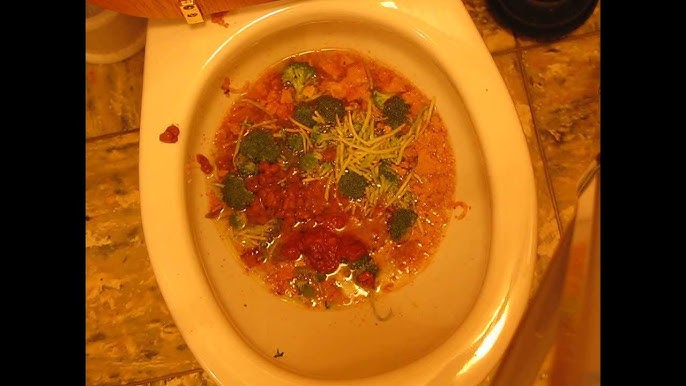The publisher is making several good observations related to Think Twice Before Flushing Food Down Your Toilet overall in the article in the next paragraphs.

Intro
Many individuals are often confronted with the predicament of what to do with food waste, particularly when it concerns leftovers or scraps. One typical concern that emerges is whether it's okay to purge food down the bathroom. In this short article, we'll delve into the reasons people may take into consideration purging food, the repercussions of doing so, and alternate methods for correct disposal.
Reasons that individuals could consider flushing food
Absence of awareness
Some people might not understand the potential harm brought on by purging food down the commode. They may incorrectly believe that it's a harmless technique.
Comfort
Flushing food down the bathroom may feel like a fast and simple service to taking care of unwanted scraps, especially when there's no neighboring garbage can offered.
Laziness
Sometimes, individuals may simply pick to flush food out of large negligence, without taking into consideration the effects of their activities.
Repercussions of flushing food down the bathroom
Ecological effect
Food waste that winds up in waterways can add to air pollution and damage aquatic environments. In addition, the water used to flush food can strain water sources.
Pipes concerns
Purging food can lead to blocked pipes and drains, causing pricey pipes repairs and hassles.
Types of food that should not be purged
Fibrous foods
Foods with coarse structures such as celery or corn husks can obtain entangled in pipelines and trigger blockages.
Starchy foods
Starchy foods like pasta and rice can absorb water and swell, leading to obstructions in pipelines.
Oils and fats
Greasy foods like bacon or food preparation oils ought to never be purged down the toilet as they can solidify and cause clogs.
Correct disposal approaches for food waste
Using a waste disposal unit
For homes furnished with waste disposal unit, food scraps can be ground up and flushed with the plumbing system. However, not all foods appropriate for disposal in this manner.
Recycling
Particular food product packaging materials can be recycled, minimizing waste and lessening ecological effect.
Composting
Composting is an eco-friendly means to deal with food waste. Organic products can be composted and made use of to enhance soil for gardening.
The importance of proper waste administration
Lowering environmental harm
Proper waste management practices, such as composting and recycling, help lessen air pollution and maintain natural resources for future generations.
Safeguarding plumbing systems
By avoiding the technique of flushing food down the bathroom, property owners can protect against costly pipes repair services and preserve the integrity of their pipes systems.
Conclusion
Finally, while it might be tempting to flush food down the bathroom for convenience, it's important to understand the possible effects of this activity. By adopting appropriate waste administration practices and throwing away food waste sensibly, individuals can add to much healthier plumbing systems and a cleaner setting for all.
FLUSH FOOD DOWN THE TOILET?
FLUSHING FOOD CAN CAUSE BLOCKED DRAINS IN YOUR HOME
All of the plumbing fixtures in your home are connected to the same sewer pipe outside of your home. This outdoor sewer pipe is responsible for transporting all the wastewater from your home to the Council sewer mains. Even small pieces of food that go down the kitchen sink can cause problems for your sewer. It should therefore be obvious that flushing larger bits of food, such as meat, risks a clog in either the toilet itself or the sewer pipes. Flushing greasy food is even more problematic because oil coagulates when it cools, coating the interior lining of your pipes.
THE TOILET IS NOT A BIN
Food isn’t the only thing that people shouldn’t be flushing down the toilet. People use the toilet to dispose of all kinds of things such as tampons, makeup wipes, dental floss, kitty litter and even underwear. Water goes to great lengths to educate residents about the high costs and stress placed on wastewater treatment systems simply from people flushing the wrong stuff down the toilet. It costs taxpayers millions of dollars each year, and homeowners thousands in blocked drain repairs.
FLUSHING FOOD IS A WASTE OF WATER
Flushing food is a waste of our most precious resource - water. In June this year Level 1 water restrictions were introduced to protect water supply from drought conditions. Much of New South Wales continues to be affected by prolonged drought with recent figures revealing up to 97 per cent of the state remains in drought. Depending on whether you have a single or dual flush toilet, every single flush uses between five and 11 litres of water. In the current climate this is a huge amount of water to be wasting on flushing food that should be placed in the bin (or better yet, the compost).
https://www.jabplumbingsolutions.com.au/blog/can-you-flush-food-down-the-toilet

I stumbled upon that page about Is it safe to flush food (especially rice) down the toilet? while doing a search on the search engines. So long as you enjoyed our post kindly do not forget to share it. Thank-you for taking the time to read it.
See Availability
Comments on “Can You to Dispose of Food in the Toilet?”